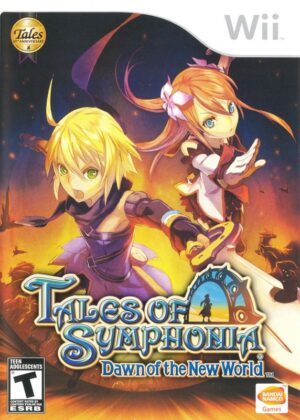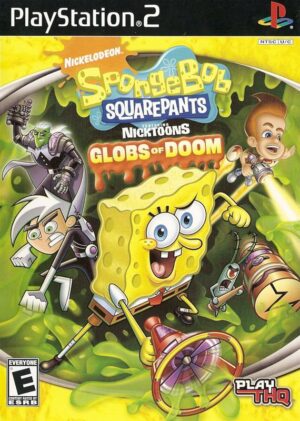Retro Replay Review
Gameplay
Ogre Battle 64 weaves together a grand strategy layer on the world map with tactical skirmishes on individual battlefields. As Magnus Gallant, you command multiple units—each made up of up to five characters—and chart their movements across the continent of Zeteginia. Capturing towns, liberating strongholds, and managing scarce resources form the backbone of your campaign. The pacing alternates between deliberate planning on the overhead map and the intensity of real-time clashes once armies collide.
(HEY YOU!! We hope you enjoy! We try not to run ads. So basically, this is a very expensive hobby running this site. Please consider joining us for updates, forums, and more. Network w/ us to make some cash or friends while retro gaming, and you can win some free retro games for posting. Okay, carry on 👍)
During combat, engagements play out automatically, but your pre-battle decisions carry immense weight. Unit formations determine attack and defense patterns, while class abilities and equipment influence damage, range, and special effects. You issue broad directives—such as targeting enemy leaders or focusing fire on weaker units—and then let the forces execute your strategy. Watching a well-coordinated cavalry charge or a well-placed fireball rain destruction on enemy ranks is deeply satisfying.
Progression in Ogre Battle 64 emphasizes careful army building and character development. Units earn experience collectively, and individual members can promote to advanced classes—knights, mages, beast tamers, and rare special roles tied to alignment and story events. Optimizing your roster means balancing front-line bruisers with support casters and healers, all while accounting for terrain bonuses, time-of-day modifiers, and unit morale.
Underpinning every decision is the Chaos Frame, a hidden reputation meter that tracks Magnus’s moral standing. Sparing foes or executing them, liberating towns or occupying them, and political dialogues all shift your alignment toward justice or tyranny. These choices unlock branching scenarios and multiple endings, giving the gameplay a dynamic, replayable quality rarely seen in tactical RPGs of its era.
Graphics
On the Nintendo 64 hardware, Ogre Battle 64 delivers an impressive isometric battlefield view, blending pre-rendered backgrounds with polygonal character models. While the resolution and texture detail reflect the limitations of the console, the art direction remains strong—knights in shining armor, war-torn villages, and lush forests all convey a vivid medieval-fantasy atmosphere.
Character sprites on the world map are crisp and colorful, each unit type instantly recognizable by silhouette and palette. Menus and UI elements are cleanly laid out, with clear icons for unit strength, health bars, and terrain advantages. Even in the heat of large-scale battles, the game maintains readability, allowing players to track multiple engagements without confusion.
Spell effects and special abilities add flair to every encounter. Flaming meteors, swirling ice storms, and lightning strikes produce satisfying bursts of color and light, compensating for the game’s modest polygon counts. Day-night cycles subtly shift the battlefield’s palette, creating an immersive sense of time passing as your campaign unfolds.
Cinematic cutscenes use animated character portraits and letterboxed frames to highlight key story beats. Though not fully voiced, the expressive artwork and well-timed transitions enhance emotional moments, from Magnus’s heartfelt speeches to dramatic betrayals. Overall, Ogre Battle 64’s visuals capture the grand scope of its narrative while retaining practical clarity for strategic gameplay.
Story
The narrative centers on Magnus Gallant, a young officer of Palatinus caught between duty to the Holy Lodis Empire and empathy for the oppressed commoners. As the empire tightens its grip on the continent, Magnus’s moral convictions are tested on and off the battlefield. His choices—whether to enforce imperial rule or to champion rebellion—shape not only his fate but also the political landscape of Zeteginia.
Supporting characters enrich the story with diverse motivations: loyal soldiers who question orders, powerful mages seeking arcane knowledge, and villagers yearning for liberation. Interactions with these allies deepen the emotional stakes, as bonds forged in battle influence whether they follow Magnus down the path of justice or tyranny.
Branching scenarios hinge on pivotal decisions: Will you occupy a strategic town or restore it to its rightful rulers? Do you execute a captured general or spare him to inspire others? Each choice shifts the Chaos Frame, unlocking unique side quests, special character classes, and alternate endings. This layered narrative ensures that no two playthroughs feel identical.
The game’s thematic exploration of loyalty, sacrifice, and power resonates long after you finish the final chapter. Whether Magnus emerges as a beloved revolutionary or a feared warlord, the consequences of your decisions linger, inviting reflection on the delicate balance between order and freedom.
Overall Experience
Ogre Battle 64: Person of Lordly Caliber stands out as a richly detailed tactical RPG that balances macro-level strategy with micro-level army management. Its deep class system, branching storylines, and moral alignment mechanics offer a level of complexity and replayability that keeps players engaged for dozens of hours. Fans of both grand strategy and character-driven narratives will find something to admire.
The learning curve can be steep for newcomers, with numerous systems—formation tactics, terrain effects, time-of-day modifiers, and the Chaos Frame—to master. Occasional menu navigation quirks and lengthy battles may test patience, but the sense of reward when your strategies succeed far outweighs these minor frustrations.
Replay value is exceptionally high thanks to multiple routes, hidden classes unlocked through specific alignment thresholds, and varied endings. Completing the game in tyranny mode versus justice mode feels like two entirely different experiences, encouraging experimentation with different playstyles.
Ultimately, Ogre Battle 64 delivers a memorable blend of strategic depth and narrative richness. Its polished visuals, engaging soundtrack, and morally charged storytelling make it a standout title in the Nintendo 64 library and a must-play for aficionados of tactical role-playing games.
 Retro Replay Retro Replay gaming reviews, news, emulation, geek stuff and more!
Retro Replay Retro Replay gaming reviews, news, emulation, geek stuff and more!









Reviews
There are no reviews yet.